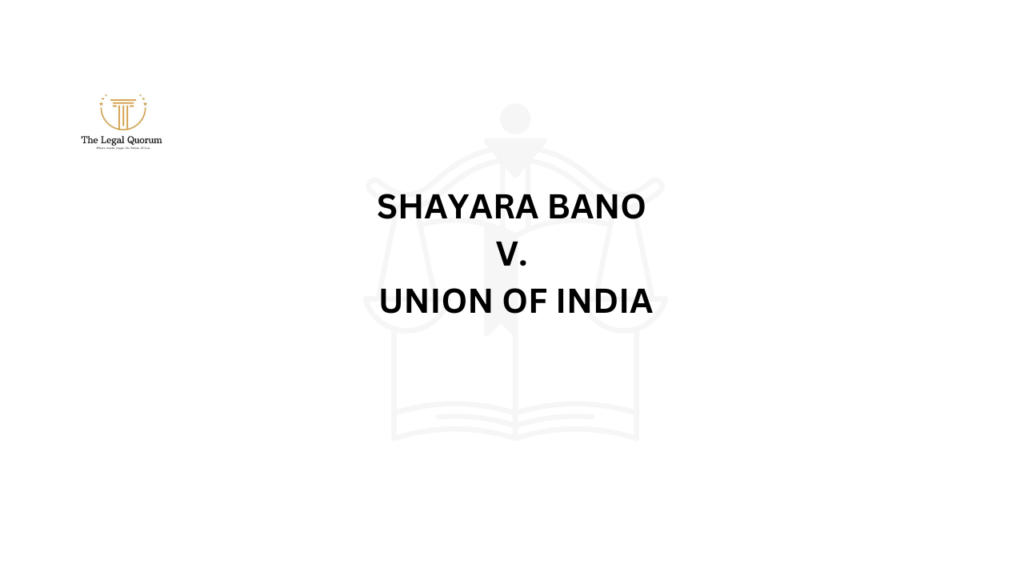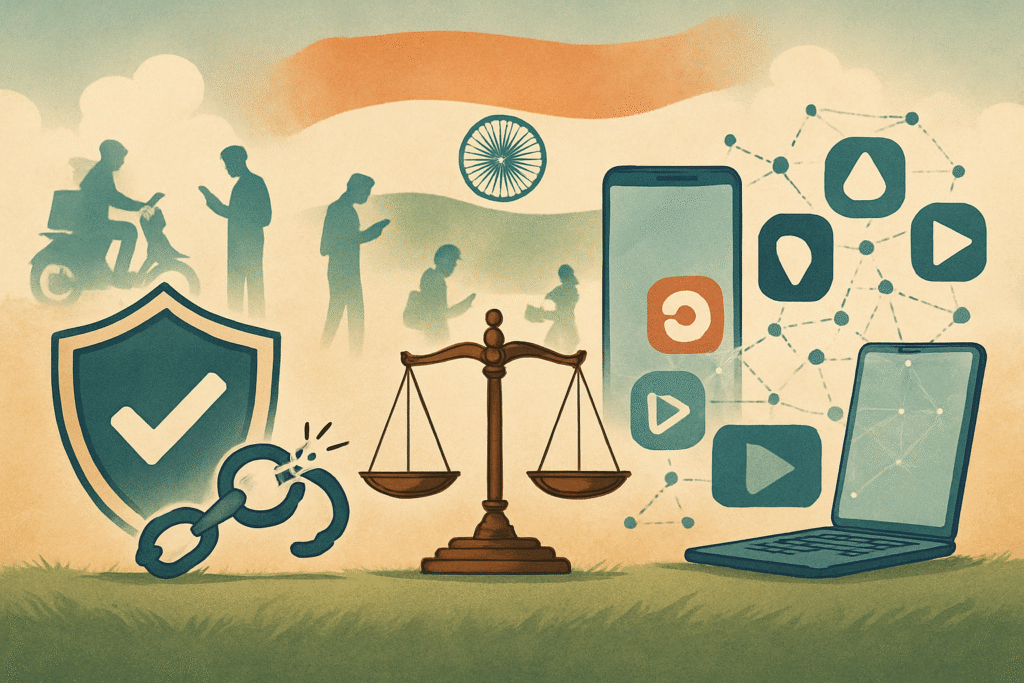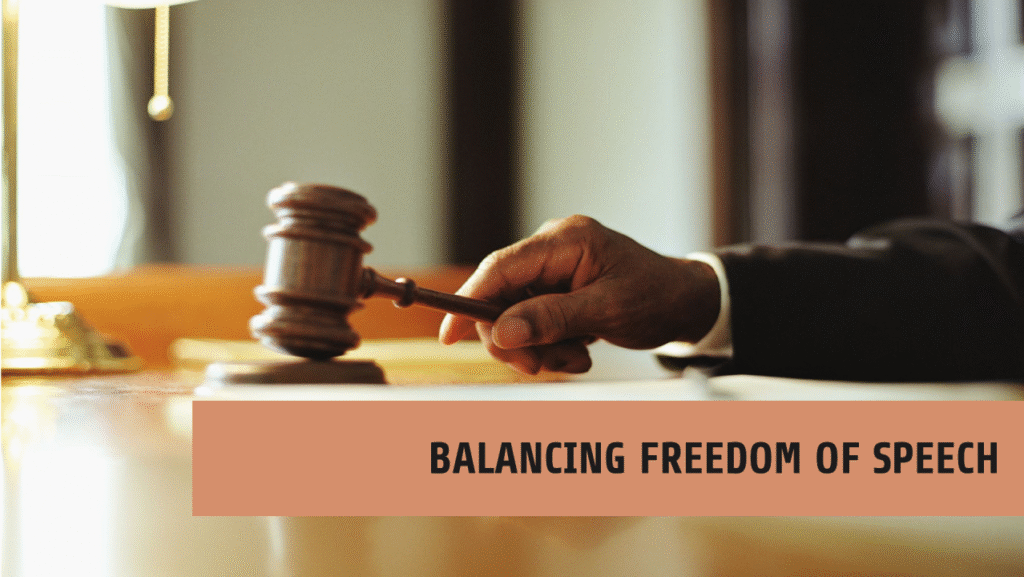Published On: September 19th 2025
Authored By: Anisha Parveen
Jamia Hamdard. New Delhi
Abstract
The right to sequestration came a veritably important part of Indian law after the major judgment in the Justice K S Puttaswamy case in 2017. Before this case sequestration was n’t easily seen as a abecedarian right. But the Supreme Court decided that sequestration is a part of the right to life and particular liberty under Composition 21 of the Constitution. This decision changed the way sequestration is understood in India. It defended people from the abuse of particular data and gave further power to individualities to control their particular information. After this case numerous other judgments have followed this path and helped the idea of sequestration to grow more in Indian law. The government now also has to follow rules to cover the sequestration of people. This case has also raised new questions about how sequestration can be balanced with public interest and public security. The trip of sequestration in India is still going on but the Puttaswamy case came a strong base for unborn opinions. This abstract addresses about how sequestration has grown in Indian law after this case and how the courts are sluggishly erecting a stronger understanding of what it means to have a private life in a ultramodern digital world.
Introduction
The New Oxford Dictionary defines the meaning of ‘Privacy’ as ‘absence or avoidance of publicity or display; the State or condition from being withdrawn from the society of others or from public interest; seclusion’[1] and the Cambridge Dictionary states that ‘Privacy’ is someone’s right to keep their persona matters and relationship secret.[2]
The right to privacy has become one of the most important parts of human rights in today’s time especially with the growth of technology and digital data. In India the idea of privacy was not always clear or strong in the beginning. People did not have full protection over their personal life and information. But everything changed with the landmark judgment in the Justice K S Puttaswamy case in 2017. The Supreme Court said that the right to privacy is a part of the right to life and personal liberty under Article 21 of the Constitution. This judgment gave a new shape to Indian law and made privacy a basic and guaranteed right for every citizen. It also became a guide for future cases and laws. Since then many legal changes and court decisions have helped to grow the meaning of privacy. This introduction will explore how the right to privacy has evolved after the Puttaswamy judgment and how it is now becoming an important part of Indian legal thinking.
History: Right to Privacy
The Supreme Court of India has spoken about different parts of the right to privacy many times before finally declaring it a fundamental right. Over time, this right has been expanded to include new areas. For example, in the Navtej Singh Johar v. Union of India[3] case, the Court said that the right to sexual orientation is also part of the right to privacy. In the Jorawar Singh Mundy v. Union of India[4] case, the Court recognized the right to be forgotten as part of privacy too.
The Court also said that, like other fundamental rights, the right to privacy can be limited, but only in special cases. These are:
- There must be a legitimate reason by the government.
- The restriction must be necessary and fair.
- The restriction must follow the proper legal process.
The history of privacy in Indian law started with three old cases:
- P. Sharma v. Satish Chandra (1954)[5] – This was about the police searching company documents. The Court said privacy was not a part of the Constitution at that time.
- Kharak Singh v. State of U.P. (1962)[6] – This case was about police keeping a watch on a person. The Court said night-time visits to someone’s home were wrong, but other forms of surveillance were allowed. Again, the Court said privacy was not a fundamental right.
- Govind v. State of Madhya Pradesh (1975)[7] – In this case, the person said the police were wrongly keeping him under watch. The Court dismissed the case but said the police rules were almost unconstitutional and needed changes.
In the ADM Jabalpur v. Shivakant Shukla[8] case, the Supreme Court had to decide whether the right to personal liberty could be limited by things other than what is written in the Constitution or laws. The Court said that even though the right to privacy is not clearly written in the Constitution, it may still exist through common law (laws developed through court decisions). Justice Khanna said that Article 21 is not the only source of the right to personal liberty. He explained that no one can be denied their life or liberty unless it is under proper legal authority, which comes from both common law and statutory law (laws passed by Parliament).
Later, in the Maneka Gandhi v. Union of India [9]case, the Supreme Court gave a broader meaning to Article 21, which talks about the Right to Life and Personal Liberty. The Court said that this includes natural rights, like personal liberty and personal security. This case helped include the right to privacy within the meaning of Right to Life.
In the R. Rajagopal v. State of Tamil Nadu [10]case, the Court talked in detail about the right to privacy. It said that privacy is part of Article 21, and it includes things like:
- Personal life
- Family life
- Marriage
- Motherhood
- Childbirth
- Education
The Court also said that no one can publish details about these matters without permission. So, the right to privacy is both a fundamental right and something that a person can legally protect in court.
Then came the People’s Union for Civil Liberties v. Union of India [11]case, which was about phone tapping. The Court said that private conversations are also protected under the right to privacy. The Court laid down some rule, such as:
- Only senior officials like Home Secretaries can allow phone tapping.
- The need for tapping must be serious.
- Tapping orders cannot last longer than two months.
The Court added that whether a person’s right to privacy has been violated or not depends on the facts of each case.
In the case of District Registrar and Collector, Hyderabad v. Canara Bank (2004)[12]The Supreme Court stated that personal liberty, freedom of expression, and freedom of movement all contribute to shaping the right to privacy. The Court also emphasized that privacy is a fundamental right related to individuals, and no one can interfere with it unless permitted by law, government orders, or court orders.
In the case of Selvi v. State of Karnataka[13]The Supreme Court discussed the distinction between physical privacy and mental privacy. The Court said that even though police can sometimes physically search a person, they cannot force someone to reveal personal thoughts or information. This was connected to Article 20(3) of the Constitution, which protects individuals from being compelled to incriminate themselves against their will (self-incrimination). The Court also ruled that using techniques like narcoanalysis, polygraph tests, and BEAP tests without consent violates a person’s mental privacy.
In the case of UIDAI v. Central Bureau of Investigation[14], the CBI wanted to access the Aadhaar biometric data for investigating crimes. The Supreme Court stopped this and said that no one’s biometric data should be shared without their written consent. The Court also said that no person should be denied any government service just because they don’t have an Aadhaar number. The authorities were told to change their forms and rules so that Aadhaar is not made compulsory.
Finally, in the most important case of Justice K.S. Puttaswamy (Retd.) v. Union of India[15], the Supreme Court had to decide whether the right to privacy is a fundamental right. This case challenged the Aadhaar scheme. The government argued that privacy is not guaranteed in the Constitution. But the Court noticed that earlier decisions were confusing—some older judgments said privacy was not a right, and others said it was. So, the matter was referred to a larger bench of judges to settle the issue.
In a historic judgment, all nine judges unanimously declared that the right to privacy is a fundamental right, protected under Article 21 of the Constitution. This decision was a turning point in Indian legal history, as it confirmed that privacy is a part of the right to life and liberty, and it is also connected to the other rights under Part III of the Constitution.
The Puttaswamy judgment showed that the Constitution must change with time to match the hopes and challenges of today’s world. We now live in a digital age, where information technology plays a big role. So, the Courts need to give a broad and open meaning to the idea of personal freedom, especially because both the government and private companies can affect our lives in big ways.
Along with court rulings and new laws, India has also agreed to many international conventions that talk about the right to privacy, such as:
- Universal Declaration of Human Rights (1948)
- The International Covenant on Civil and Political Rights (1966)
- The European Convention on Human Rights (1953)[16]
On 24th August 2017, the Supreme Court of India gave a historic judgment where it declared that the right to privacy is a fundamental right under the Indian Constitution. The Court said that this right comes from the right to life and liberty, and this decision would have a lasting impact on how personal freedom is understood in India.
The case was Justice K.S. Puttuswamy (Retd.) v. Union of India, and it was heard by a Nine-Judge Bench of the Supreme Court. The issue came up because people were challenging the Aadhaar project, which collects biometric data of individuals for identification.
The Court gave a 547-page judgment, and all nine judges agreed that the right to privacy is indeed a part of fundamental rights. This judgment overruled two old cases that had earlier said that the right to privacy was not a fundamental right.
The Court said that the right to privacy is not separate but can be understood along with Article 14 (equality), Article 19 (freedom), and Article 21 (right to life and liberty). The judges called privacy an “inalienable right”, which means it cannot be taken away. If the government does anything that violates this right, such action can be challenged in court under judicial review.[17]
However, the Court also made it clear that the right to privacy is not absolute. This means it can be limited in special situations. The government can place reasonable restrictions on this right, provided it follows certain rules. The Court laid down three tests that any government action must pass:
- There must be a valid law that allows the government to interfere with privacy.
- There must be a legitimate purpose, such as protecting national security or public interest.
- The method used must be fair and necessary to achieve that purpose, not excessive or unreasonable.[18]
Conclusion
In the end we can say that the right to privacy is very important for every person in today’s time. The Supreme Court has clearly said that it is a part of our fundamental rights. It protects our personal life and our freedom. The judgment in the Puttaswamy case has changed the way we look at privacy in India. It has helped in making strong laws and has also stopped the misuse of power by the State. Even though the right to privacy is not an absolute right it is still a big step towards protecting our rights and freedom in a growing digital world.
References
[1] The New Oxford Dictionary. (1993) (Volume 2)
[2] https://dictionary.cambridge.org
[3] Navtej Singh Johar v. UOI, AIR 2018 SC 4321.
[4] Jorawer Singh Mundy v. UOI, W.P. (C) 3918/ 2020.
[5] M.P Sharma & Ors v. Satish Chandra, AIR 300, 1954 SCR 1077.
[6] Kharak Singh v. State of UP, AIR 1295, 1964 SCR (1) 332.
[7] Govind v. Madhya Pradesh & Anr, AIR 1378, 1975 SCR (3) 946.
[8] AIR 1975 SC 1378
[9] AIR 1978 AIR 597, 1978 SCR(2) 621
[10] AIR 1995 SC 264
[11] AIR 1997 SC 568
[12] AIR 2004 SC 6350
[13] AIR 2010 SC 1974
[14] (Crl) No(s).2524/2014
[15] AIR 2014 SC 2524
[16] Swati Nair, Crystal Ann George & Nileena Banerjee, “HISTORICAL ANALYSIS OF RIGHT TO PRIVACY” (May-June 2022) < https://thelawbrigade.com/wp-content/uploads/2022/06/Swati-Crystal-Nileena-JLSR.pdf >
[17] Sargam Thapa, “The Evolution of Right to Privacy in India” (February 2021) < https://www.ijhssi.org/papers/vol10(2)/Ser-1/J1002015358.pdf >



